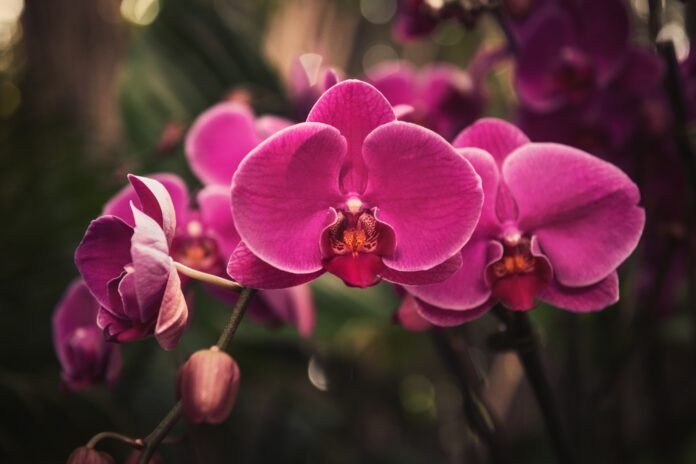Flowering houseplants are a great way to bring some color and life to your home. Two popular flowering houseplants are the Moth Orchid (Phalaenopsis) and the Christmas cactus (Schlumbergera). In this article, we’ll take a closer look at these two plants and provide some tips for Phalaenopsis orchid care and repotting Christmas cactus.
Phalaenopsis Orchid Care
The Moth Orchid, also known as the Phalaenopsis, is a popular flowering houseplant due to its large, showy flowers and long-lasting blooms. Here are a few tips for Phalaenopsis orchid care:
- Light – Phalaenopsis orchids prefer bright, indirect light. Direct sunlight can scorch their leaves, so it’s best to keep them away from windows.
- Water – Phalaenopsis orchids need to be kept consistently moist, but they don’t like to sit in standing water. Water your orchids once a week, or when the potting mix feels dry to the touch.
- Humidity – Phalaenopsis orchids thrive in high humidity, so it’s important to provide them with a moist environment. You can achieve this by misting the leaves daily or placing a tray of water near the plant.
- Fertilizer – Phalaenopsis orchids benefit from regular feeding during the growing season (spring and summer). Use a balanced, water-soluble fertilizer once a month to keep your orchids healthy and happy.
Christmas cactus care
Christmas cactus (Schlumbergera) is a popular flowering houseplant that blooms during the holiday season. Native to the rainforests of Brazil, these cacti are easy to care for and can live for many years with proper attention. In this article, we’ll take a closer look at Christmas cactus care, including tips for repotting.
- Light: Christmas cactus prefers bright, indirect light. Direct sunlight can scorch the leaves, so it’s best to keep the plant away from windows during the summer months. In the fall and winter, Christmas cactus needs a minimum of 12-14 hours of darkness each day to trigger blooming. You can achieve this by placing the plant in a dark room or covering it with a dark cloth in the evenings.
- Watering: Christmas cactus requires consistent moisture, but it’s important not to overwater. Water the plant when the top inch of soil feels dry to the touch. Be sure to allow excess water to drain away to prevent root rot. During the fall and winter, when the plant is blooming, you may need to water more frequently.
- Humidity: Christmas cactus thrives in a humid environment. You can increase humidity by placing a tray of water near the plant or misting the leaves regularly. Avoid getting water on the blooms, as this can cause them to drop prematurely.
- Fertilizer: Christmas cactus benefits from regular feeding during the growing season (spring and summer). Use a balanced, water-soluble fertilizer every two to four weeks to keep the plant healthy and blooming.
Repotting
Repotting Christmas cactus is necessary every two to three years, or when the plant becomes root-bound. The best time to repot is in the spring, just after the plant has finished blooming. Here are some repotting tips:
- Choose a pot that is slightly larger than the current one.
- Use a well-draining potting mix. You can make your own by combining equal parts potting soil, perlite, and sand.
- Gently remove the Christmas cactus from its current pot and shake off any excess soil. Be careful not to damage the roots.
- Place the plant in the new pot, adding fresh potting mix around the roots. Water the plant well and allow it to drain.
With proper care, Christmas cactus can bloom for many years and become a beloved holiday tradition in your home. By following these care tips and repotting guidelines, you can keep your plant healthy and thriving, ensuring a long-lasting bloom for many seasons to come.
